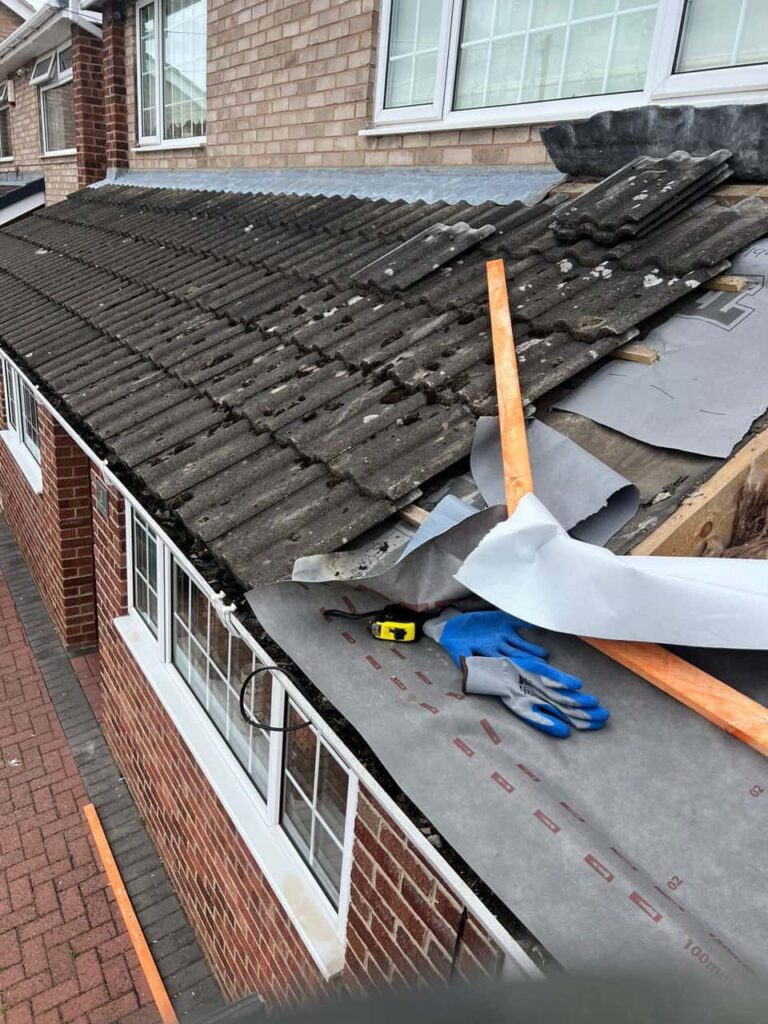Lead flashing may not always be the most visible part of a roof, but it plays one of the most vital roles in keeping a property watertight. It is designed to form a barrier that prevents water from seeping into joints and gaps where different roofing elements meet — such as around chimneys, dormers, or roof valleys. When this flashing is incorrectly installed, it can quickly become the source of persistent leaks and costly structural issues. Fulbourn Roofing Repairs has seen first-hand across Fulbourn, Cambridgeshire, how poor installation practices can compromise even the strongest roof systems.
The Purpose of Lead Flashing
Lead flashing serves as a flexible, weather-resistant seal between roof materials and adjoining structures. Its purpose is simple — to direct rainwater safely away from vulnerable joints and prevent it from penetrating beneath the roofing layers.
When installed properly, lead flashing expands and contracts with temperature changes without cracking or losing its seal. This makes it especially suitable for the UK’s variable climate, where roofs must endure constant cycles of wet and dry, heat and cold.
How Poor Installation Leads to Leakage
Even the most durable lead flashing can fail if it isn’t installed correctly. There are several key reasons why incorrect installation results in water ingress and ongoing maintenance problems.
1. Poor Fixing or Inadequate Sealing
If the flashing is not properly fixed into brick joints or sealed with high-quality mortar, gaps can develop where water seeps in. Over time, this allows moisture to penetrate the roofline or wall, leading to damp patches and interior staining.
2. Incorrect Overlap or Joint Detailing
Each section of lead flashing must overlap the next by a precise margin to prevent water from tracking underneath. If the overlap is too short or poorly aligned, rainwater can find its way through the smallest gaps, causing leaks during heavy downpours.
3. Over-Stretching the Lead
A common installation mistake is stretching the lead too tightly across a surface. Lead naturally expands and contracts with temperature changes. If it has no room to move, it can fatigue and crack under pressure — particularly during hot summers or freezing winters.
4. Using the Wrong Lead Code
Lead flashing comes in different thicknesses (known as “codes”) to suit different applications. Using the wrong code — for example, a thin grade where a heavier one is needed — can cause premature failure. The flashing may warp, split, or lift away from the surface when exposed to wind and weather.
5. Insufficient Support or Fixings
If flashing is left unsupported or inadequately fixed to the roof, it can sag or lift in windy conditions. Once this happens, water is easily blown underneath, and the flashing’s protective function is lost.
Common Areas Affected by Poor Flashing Installation
Leaks caused by poor lead flashing are often found in particular roof zones, including:
- Chimney stacks: Water can enter where flashing meets the brickwork if not securely sealed.
- Roof valleys: These collect large volumes of rainwater, and incorrect detailing can allow seepage beneath the tiles.
- Dormer windows and skylights: Improperly flashed joints between the roof and window frame are frequent leak points.
- Wall abutments: Where the roof meets a vertical wall, flashing must be precisely fitted and watertight to prevent lateral seepage.
Fulbourn Roofing Repairs regularly inspects properties across Fulbourn, Cambridgeshire, where water ingress issues have been traced back to these exact problem areas.
Early Signs of Flashing Failure
Recognising the early warning signs of failing flashing can help homeowners act before significant damage occurs. Common indicators include:
- Staining or dampness on interior ceilings or walls.
- Moss or vegetation growth near roof joints.
- Peeling paint or plaster caused by moisture absorption.
- Cracked or missing mortar around flashing edges.
- Visible gaps or lifting along the flashing line.
Promptly addressing these symptoms can save further deterioration to the roof structure and internal finishes.
The Importance of Proper Installation
Lead flashing requires specialist knowledge to install correctly. It’s not simply a matter of placing lead sheets over joins — it involves careful cutting, shaping, and securing of the metal to fit the contours of the roof and adjoining walls.
Professional installers follow best practices that include:
- Allowing correct lap joints and drips to channel water away efficiently.
- Using appropriate lead codes for different roof sections.
- Securing flashings with proper fixings and weatherproof mortar.
- Incorporating expansion joints to accommodate movement without stress.
At Fulbourn Roofing Repairs, every project in Fulbourn, Cambridgeshire, is completed with precision and care, ensuring lead flashing performs exactly as intended — forming a durable, flexible, and watertight seal for years to come.
The Consequences of Ignoring Faulty Flashing
When flashing fails, the impact often extends beyond a small leak. Continuous exposure to moisture can lead to rot in roof timbers, insulation damage, and interior mould growth. Even minor water ingress can, over time, compromise roof integrity and shorten its lifespan.
Addressing flashing issues early, before the damage spreads, is crucial to maintaining the performance and value of your property.
Preventative Care for Long-Term Protection
To avoid problems caused by poor installation or wear, homeowners should include flashing checks as part of their regular roof maintenance. Professional inspections after extreme weather or visible roof movement can identify potential weaknesses early.
Simple preventive measures such as clearing debris and ensuring gutters and valleys are free-flowing can also help reduce water pressure against the flashing.
Why Choose Professional Roofers for Flashing Work
Lead work is one of the most skilled aspects of roofing, requiring both precision and experience. A well-installed lead flashing system not only prevents leaks but also enhances the longevity of the entire roof.
Fulbourn Roofing Repairs offers expert lead flashing installation and repair services throughout Fulbourn, Cambridgeshire. Each project is handled by experienced roofers who understand the importance of detail, ensuring your roof remains weatherproof and structurally sound.
Conclusion
Lead flashing is a small yet crucial component in any roofing system. When fitted correctly, it protects against water ingress and ensures the roof performs reliably for decades. When installed incorrectly, however, it can be the root cause of recurring leaks and internal damp problems.
Fulbourn Roofing Repairs provides professional inspection, repair, and installation services across Fulbourn, Cambridgeshire, specialising in ensuring every roof — and its lead flashing — performs to the highest standards. Properly installed lead flashing is not just a technical necessity but an investment in the long-term protection and stability of your home.
Call us on: 01223 659 397
Click here to find out more about Fulbourn Roofing Repairs
Click here to complete our contact form and see how we can help with your roofing needs.

